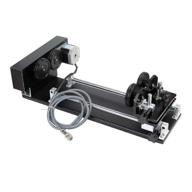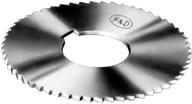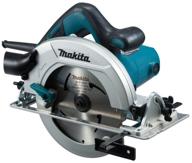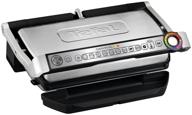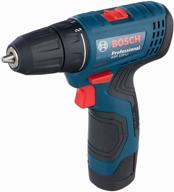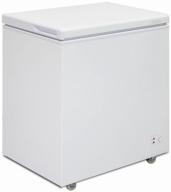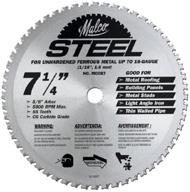Top products in 🪚 Metal Cutting Circular Saw Blades
The Ubiquitous Circular Saw Blade
Whether you're a professional contractor or a weekend DIYer, chances are you've used a circular saw equipped with a metal cutting blade. These versatile tools can be found in almost every workshop and construction site, thanks to their ability to power through all kinds of metal quickly and efficiently.
In fact, the humble circular saw blade is one of the most commonly used saws for metal fabrication. According to industry statistics, over 15 million metal cutting circular saw blades are sold each year in the US alone. With global demand added, the worldwide market for these consumable tools exceeds $600 million annually.
Popularity for Good Reason
What accounts for the immense popularity of the circular saw blade? There are several key factors:
- Affordability - Metal cutting blades are relatively inexpensive, especially compared to band saws or cut-off machines.
- Portability - Handheld circular saws allow workers to take the tool to the workpiece, rather than the other way around.
- Speed - Their thin kerf and fast cutting action lets users zip through metals quickly.
- Versatility - The same basic saw can cut mild steel, stainless, aluminum - even tile and wood.
- Safety - Modern circular saws have integrated safety features like blade brakes and riving knives.
An Indispensable Tool
With this winning combination of price, efficiency, and functionality, it's no wonder the circular saw equipped with a metal cutting blade has become ubiquitous on jobsites and in home shops. Whether you're a metal fabricator, HVAC technician, plumber, electrician, general contractor or hands-on DIYer, a good circular saw optimized for cutting metal is arguably one of the most indispensable tools you can own.
This article will explore everything you need to know about selecting, using and maintaining circular saw blades specifically designed for cutting metal. Read on to learn how having the right blade can save you time, effort, and fingers!
Similar products
Choosing the Right Metal Cutting Blade Type
If you were to walk down the saw blade aisle at a hardware store, you'd see there are a few main types of circular saw blades designed specifically for cutting metal.
The good news is that you don't need to be completely confused when faced with all the options. There are really just 3 major kinds of metal cutting blades, each with their own strengths and weaknesses:
Abrasive Blades
- Use abrasive grits like aluminum oxide or zirconium carbide embedded in the steel body.
- The grits do the actual cutting work as they fracture and tear the metal.
- Usually the most economical option.
- Best for mild steel, softer metals, or dirty metals.
- Fast cutting but blades wear out more quickly.
Diamond Blades
- Tips coated with industrial grade diamonds do the cutting.
- Harder than abrasives so they last longer.
- More expensive but provide clean cuts with less wear.
- Work well on stainless steel and other hard, abrasion-resistant metals.
- Don't cut as aggressively as abrasive blades.
Carbide-Tipped Blades
- Micro-grains of tungsten carbide at the tooth tips.
- Carbide is extremely hard and durable.
- Withstand high heat when cutting metals.
- Most versatile for all types of metals.
- Priced between abrasive and diamond blades.
Many manufacturers also offer "combo" blades that combine abrasive grits, diamond, and carbide on the same blade for maximum versatility. The type you choose depends on the specific metals and thickness you'll be cutting most often.
Understanding the strengths of each blade type will help guide you to the right circular saw blade for your needs. Keep reading to learn more about sizes, tooth configurations, and specialized blades.
Another interesting products
Picking the Right Circular Saw Blade Diameter
Circular saw blades for cutting metal come in a range of diameters, usually starting around 4 1⁄2 inches up to 12 inches or more. Choosing the right size blade for your circular saw and cutting application helps ensure optimal performance.
Smaller Blades - 4 1⁄2 to 6 1⁄2 inches
- For light duty cutting of thinner metals less than 1/4 inch thick.
- Ideal for use in compact or cordless circular saws.
- Easy to control for straight cuts and tight curves.
- 4 1⁄2 inch blades can cut flush against walls.
Medium Blades - 7 1⁄4 to 8 1⁄4 inches
- The most common size for general sheet metal fabrication.
- Designed for mid-size corded circular saws up to 15 amps.
- Good balance of cutting capacity and control.
- Used to cut metal from 1/8 inch to 3/8 inch thick.
Large Blades - 9 to 12 inches +
- For heavy duty saws 15 amps and up.
- Allow fast cuts through thick steel plate over 1/2 inch.
- Require more horsepower to drive blade.
- Challenging to control on curved cuts.
Matching Blade and Saw
Always make sure your saw's arbor size and power output are matched to the blade. For example, a 7 1⁄4 inch blade would overwhelm a compact 6 amp saw, while a 4 1⁄2 inch blade on a 15 amp saw is underutilizing the available motor power.
Most manufacturers provide specific guidelines on what size blade can be safely run on each saw model. Using an improperly sized blade is unsafe and can damage the tool.
Selecting the blade diameter best suited for your typical cutting applications and circular saw size will help you work efficiently and achieve clean, accurate cuts.
Tooth Design Matters for Metal Cutting
The number, shape, set, and other characteristics of the teeth on a circular saw blade all impact its performance when cutting metal.
Tooth Count
- Higher tooth counts (60+ teeth) provide smoother, cleaner cuts.
- Lower tooth counts (24-40 teeth) cut more aggressively but roughly.
- A good compromise for metal is 40-50 teeth.
Tooth Set
- Teeth are bent outwards slightly in alternating directions.
- This "set" prevents binding by allowing clearance for the blade body.
- More set for soft, gummy metals. Less set for hard alloys.
Tooth Shape
- Alternating top bevel (ATB) teeth cut fast with moderate smoothness.
- Triple chip grind (TCG) teeth are very aggressive and leave rough cuts.
- Flat top grind offers maximum smoothness but slower feed rate.
Carbide vs Steel Teeth
- Carbide tips cut efficiently with extreme hardness and heat resistance.
- Steel teeth are more economical but wear down faster.
Gullet Size
- The gullet is the valley between teeth that carries away material chips.
- Large gullets evacuate chips faster when cutting thick metals.
- Smaller gullets work better for thinner metals.
Manufacturers engineer the tooth configuration on each blade to optimize it for certain metals and thicknesses. So consider what you'll be cutting most when choosing a blade. The right tooth design can mean a world of difference in cut quality, speed, and blade life.
Metals and Materials Cut with Circular Saw Blades
Thanks to advances in blade technology and tooth configurations, today's circular saw blades are highly versatile when it comes to the types of metals and materials they can cut.
Mild Steel
One of the most common uses is cutting mild carbon steel in various thicknesses. Mild steel is easy to cut and the most economical choice for applications like:
- Structural fabrication
- Pipe and tubing
- Sheet metal enclosures
- Metal roofing
Stainless Steel
Specially designed blades make clean cuts through all grades of stainless steel. Stainless has become popular for:
- Restaurant kitchen equipment
- Medical and laboratory devices
- Chemical processing equipment
- Marine components
Aluminum
Aluminum's lightweight properties make it useful across industries. Circular saws effortlessly cut aluminum stock for:
- Machined parts
- Fabricated structures
- Solar panel frames
- Truck and trailer bodies
Other Metals
In addition, metal cutting circular saw blades can handle:
- Copper
- Brass
- Bronze
- Galvanized steel
- Tool steel
- Cast iron
So whether you need to fabricate something out of sheet metal or cut pipe and structural shapes, circular saws can likely handle the job!
Specialty Circular Saw Blades for Unique Applications
While general purpose metal cutting blades handle most fabrication jobs, sometimes a specialty blade designed for specific tasks can optimize cutting performance.
Wet Metal Cutting Blades
- Have wider gullets to channel water and cool the edge.
- Used when cutting with lubricating fluid to reduce heat.
- Help prolong blade life and prevent steel from overheating.
- Ideal for cutting abrasive metals like stainless steel or hardened tool steel.
Thin Metal Cutting Blades
- Very narrow kerf to minimize material waste.
- Allows tight radius cuts in thin sheet metal or wall paneling.
- Tooth configuration reduces binding in slim workpieces.
Plunge Cut Blades
- Reinforced core and teeth for piercing into metal stock.
- Creates starting hole for interior cutouts and openings.
- Leading teeth scribe groove before main teeth follow.
Tile and Masonry Blades
- Diamond abrasive edge grinds through non-metallics.
- Cuts ceramic tile, fiber cement, cement board, etc.
- Allows use of circular saw for remodeling jobs.
There are also carbide grit blades for cast iron, fine finish blades for smoother cuts, and more. Consider your particular cutting application when choosing a blade style.
The good news is many major brands offer metal cutting "combo" blades that combine features for all-around use. This saves having to stock too many specialty blades.






